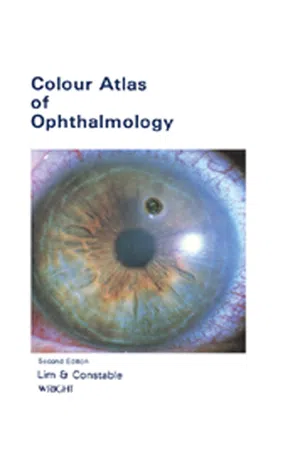
- 156 pages
- English
- ePUB (mobile friendly)
- Available on iOS & Android
Colour Atlas of Ophthalmology
About This Book
Colour Atlas of Ophthalmology, Second Edition provides information pertinent to the fundamental aspects of ophthalmology. This book provides the correct diagnosis and treatment of many ocular disorders. Organized into 11 chapters, this edition begins with an overview of the process of assessment of a patient with eye disease, which includes taking a good history, examining the eyes with adequate illumination, and testing the visual function. This text then describes exophthalmos, which is the most common condition of the orbit and indicates the possibility of thyroid disease or a space-occupying lesion. Other chapters consider the common causes of ocular injuries, including injury from flying particles, sharp instruments, chemicals, and ocular injury associated with head injury. The final chapter deals with the common, therapeutic, and diagnostic ocular drugs. This book is a valuable resource for ophthalmologists, physicians, nurses, students, and all those paramedical personnel who have to deal with common eye disease.
Frequently asked questions
Information
EXAMINATION
Publisher Summary
INTRODUCTION
HISTORY
OCULAR SYMPTOMS
Decreased visual acuity
Floaters
Flashes
Table of contents
- Cover image
- Title page
- Table of Contents
- Copyright
- THE AUTHORS
- PREFACE
- PREFACE TO SECOND EDITION
- ACKNOWLEDGEMENT
- Chapter 1: EXAMINATION
- Chapter 2: LID, LACRIMAL APPARATUS AND ORBIT
- Chapter 3: CONJUNCTIVA SCLERA AND CORNEA
- Chapter 4: LENS AND GLAUCOMA
- Chapter 5: UVEAL TRACT, RETINA AND VITREOUS
- Chapter 6: OCULAR MANIFESTATIONS OF SYSTEMIC DISEASES
- Chapter 7: NEURO-OPHTHALMOLOGY
- Chapter 8: EYE DISEASES IN CHILDREN
- Chapter 9: OCULAR INJURIES
- Chapter 10: REFRACTIVE ERRORS
- Chapter 11: OPHTHALMIC DRUGS
- INDEX